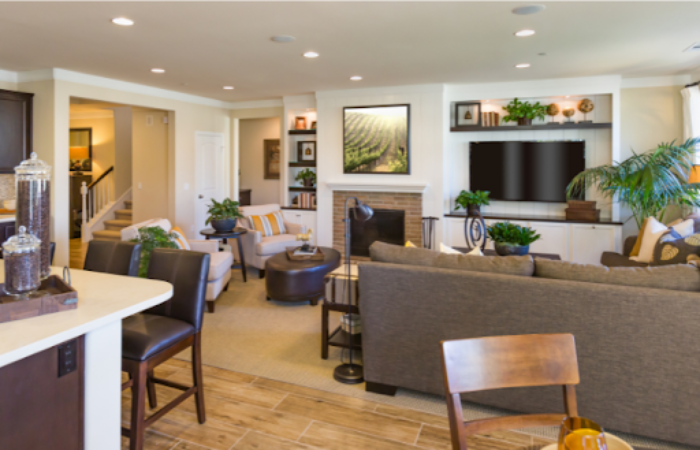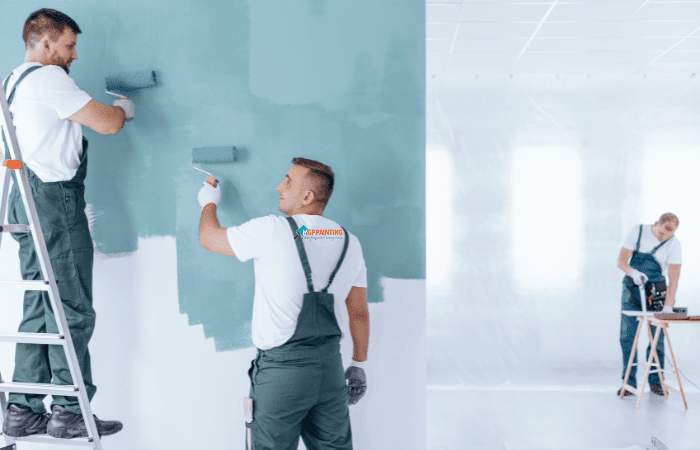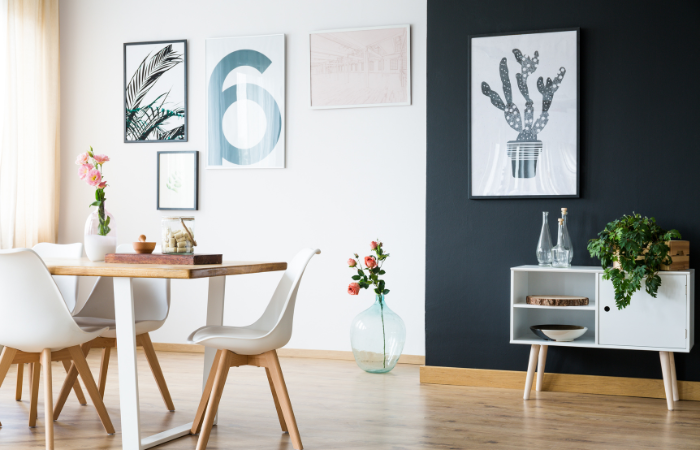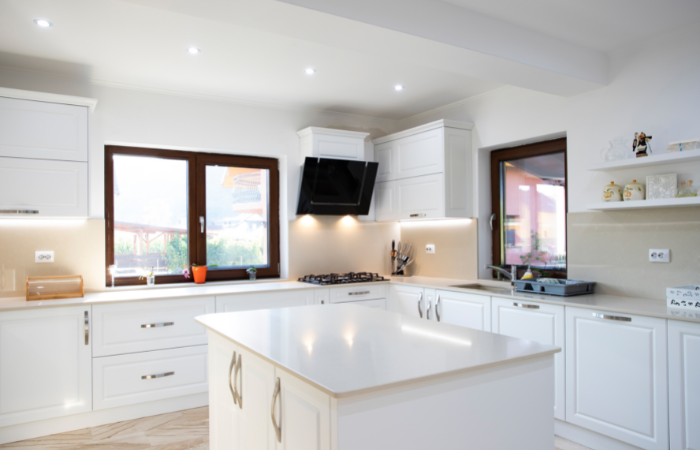
These Interior Maintenance Tips Will Longer the Life of Your Home Interior Paint
Introduction
When you move into a new home, one of the first things you want to do is spruce up the interior paint. But not all paints are created equal. While some may last longer than others, they all need maintenance in order to look their best and continue to protect your walls from wear and tear. In this post, we’ll look at some interior maintenance tips that will help extend the life of your home’s interior paint job. From proper ventilation to cleaning techniques, these tips will help keep your home looking fresh for years to come.
The Importance of Maintaining Your Home Interior Paint

Over time, paint on your home interior walls can start to fade, chip, and peel. Not only does this affect the look of your home, it can also lead to expensive repairs. By regularly maintaining your home interior paint, you can keep your walls looking their best while also protecting your investment.
Here are a few tips for maintaining your home interior paint:
1. Regularly clean your walls. Dust and dirt can build up on painted surfaces, causing them to look dull and lifeless. To keep your walls looking fresh, wipe them down with a damp cloth or dust them with a soft brush on a weekly basis.
2. Touch up any chips or scratches as soon as they happen. Small imperfections in your paint can quickly turn into big problems if they’re not addressed right away. Use a touch-up kit or matching paint to fill in any chips or scratches, then blend the area until it’s barely noticeable.
3. Apply a new coat of paint every few years. Even if your paint is still in good condition, it can benefit from a fresh coat every few years. This will help protect your paint from wear and tear and keep it looking its best for longer.
By following these simple tips, you can maintain the beauty of your home interior for many years to come.
The Right Way to Clean Walls Before Painting
Before painting your walls, it is important to clean them first. This will get rid of any dust or grime that can interfere with the paint's ability to adhere correctly. The best way to clean walls is with a vacuum and a soft brush attachment. Using soft strokes, begin at the top of the wall and work your way down. Once you have vacuumed the entire wall, you can then wipe it down with a damp cloth to remove any remaining debris.
Tips to Keep Your Home Interior Paint Looking New

It's important to regularly clean your home's interior paint to keep it looking new. Here are some tips to help you:
- vacuum or dust regularly to remove dirt and debris
- use a damp cloth to wipe down walls as needed
- avoid using harsh cleaners or chemicals on painted surfaces
- touch up any areas that show wear or damage
Tips for Applying Paint
Interior paint is one of the most important aspects of maintaining your home’s appearance. Here are a few tips to keep in mind when applying paint to your home’s interior:
-Paint in the shade whenever possible. This will help prevent the paint from drying too quickly and becoming difficult to work with.
-Use a primer before painting to help the paint adhere better to the surface and last longer.
-Be sure to clean the walls before painting them. This will help remove any dirt or dust that could potentially impact the quality of your paint job.
– Apply a roller to bigger surfaces and a brush to smaller ones. Even paint application will be simpler as a result.
-Start at the top of the wall and descend. Any drips or runs will be prevented by doing this.
-If additional paint is required, let the first coat completely dry before adding a second.
By following these tips, you can ensure that your home’s interior paint job will look its best for years to come!
How Often Should You Paint Your Home Interior?
How often you need to repaint your home interior depends on a few factors. The first is the quality of the original paint job. If the paint was applied correctly and with high-quality materials, it will last longer than if it was done with lower quality products. The second factor is how much wear and tear your home interior experiences. If you have kids or pets, or if you entertain often, your walls will show signs of wear sooner and will need to be repainted more frequently.
Ideally, you should repaint your home interior every 3-5 years. This allows you to keep up with changes in trends and also maintain the condition of your walls. Of course, if you start to see wear and tear before that time frame, don’t hesitate to give your walls a fresh coat of paint.
When to Repaint Your Home Interior
It is generally recommended to repaint your home interior every three to five years, in order to keep the paint looking fresh and new. If you live in an area with high humidity, you may need to repaint more frequently, as the paint can start to peel and blister in these conditions. You may also want to repaint more often if you have young children or pets, as they can cause wear and tear on walls that will show up more quickly than in homes without kids or animals.
How to Choose the Best Interior Paint

As with any home improvement project, choosing the best interior paint for your home depends on a number of factors. But with a little research and guidance, you can select the perfect paint to help achieve the look you desire and ensure a long-lasting finish.
To begin, consider the type of paint finish you want. There are three main types of interior paint finishes: flat/matte, eggshell/satin, and high-gloss. Considering that each has benefits and drawbacks of its own, it's crucial to select the option that best meets your requirements.
Flat or matte finishes are ideal for areas that don't get a lot of traffic or wear and tear, such as walls in bedrooms or living rooms. They're also great for hiding imperfections in surfaces. However, flat paints are more difficult to clean than other types of paint finishes and show dirt and grime more easily.
Eggshell or satin finishes have a slight sheen that helps hide imperfections while still being easy to clean. These types of paints are often used in hallways, kitchens, and bathrooms where there is more traffic and higher risk of spills and stains.
High-gloss finishes are very shiny and reflect light well, making them ideal for trim work or other areas where you want a bit more drama. However, they're also more susceptible to scratches and fingerprints, so they're not always the best choice for high-traffic areas.
The Benefits of a Good Interior Paint Job
A good interior paint job can do wonders for your home. It can brighten up a dark room, make a small space appear larger, or give an old room a fresh new look. Painting is also a great way to protect your investment by prolonging the life of your walls and protecting them from damage.
Conclusion
Taking the time to properly maintain your home's interior paint is essential for ensuring it has a long life. While some of this maintenance can be tedious, they are all simple and straightforward tasks that will help you keep your home in tip-top shape. We hope that our tips have helped you understand what steps to take so that your interior paint job lasts as long as possible. Now get out there and start sprucing up those walls!
Recent Posts
- Garage Floor Painters & Concrete Coating Experts Near You: What to Expect in 2025
- Business Painting Services That Mean Business: What to Expect from a Professional Commercial Painter
- What’s the Difference Between Commercial and Residential Painting Services?
- Types of Commercial Painting Services Explained: Interior, Exterior & Specialty Jobs
- Why Commercial Properties Need Specialized Painting Solutions
- Office Building Painting 101: Tips, Colors & Cost Guide
- Top Qualities to Look for in a Commercial Painting Company
- Interior vs. Exterior Commercial Painting: What Your Property Needs First
- Retail Painting Services: How to Keep Your Storefront Looking Fresh Year-Round
- How to Choose the Right Commercial Painting Contractor for Your Building
- Need Commercial Painting Experts Near You? Here's What We Offer
- Everything You Need to Know About Painting Interior Doors
- How Long Does Interior Paint Really Last (And How Often Should You Repaint?)
- Painting Cabin Interiors: Best Colors, Finishes, and Techniques
- Interior vs. Exterior Paint: What’s the Real Difference?
- Painted Hardie Board & Wall Texture Tips: What Homeowners in Cornwall Hudson Need to Know
- From Walls to Exteriors: Luxe Finishes with Foil Gold Wallpaper, Pre-Painted Hardie Board & Sherwin-Williams Products
- How Much Does It Really Cost to Sand Texture a Painted Wall?
- Vinyl Plank vs. Laminate Flooring: The Ultimate Homeowner's Guide
- Top Tips to Choose the Wall Texture Types for Your Home
- Affordable Painting Services Near Me: How Much to Paint a Bedroom and Other Home Painting Costs
- Affordable Painting Contractors Near Me: How Much Does It Cost to Paint a House Exterior?
- How to Save on Painting a Two-Story House: Affordable Painting Contractors in Your Area
- How Much Does It Cost to Paint a Room? Find Affordable Painters Near You
- Interior House Painting in Bergen & Rockland County – Done Right
- Can You Use Interior or Exterior Paint in the “Wrong” Place?
- How Long After Washing Walls Can You Paint? Plus, Expert Help from MGP Painting
- Why Hiring Professional Painters is the Best Decision for Your Home or Business?
- Why Hiring Professional Painters is Key to Stunning Venetian Plaster Walls?
- Why Choose Professional Painters for Your Interior Painting in Westchester County, NY?
- Why a Fresh Coat of Paint is the Perfect Gift for Your Home This Holiday Season?
- The Best Crown Molding Ideas for Your Mobile Home
- When to Use Elastomeric Paint on Stucco Surfaces?
- How Whitewashed Brick Can Give Your Rockland House a Stylish, Modern Vibe?
- The Ultimate Guide to Cleaning and Staining Cedar Siding
- How MGP Painting Resolves Exterior Painting Issues in Allendale, Ardsley, and Baldwin Place?
- How to Choose the Perfect Rustic Barn Colors for Your Property?
- Painting James Hardie Siding: The Best Exterior Paint for Painting Fiber Cement Siding
- Wood vs. Vinyl Siding: A Comprehensive Comparison
- Paint or Replace Vinyl Siding: Which Option is Right for Your Home?
- Embrace Fall 2024 with Trendy Home Colors: Insights from Magnolia Homes and Sherwin-Williams
- Trending Colors in Residential Interior Painting for 2024
- The 3 Biggest Mistakes Westchester Homeowners Make in DIY Kitchen Cabinet Painting
- Top 5 Painting Tips To Get Your Rockland Home Holiday-Ready
- Why Choose a Professional Interior-Exterior House Painting Contractor in Westchester County, NY
- 5 Tips for Choosing the Right House Painter in Bergen County, NJ
- What is the average cost to remove wallpaper in Rockland County?
- How much does it cost to hire an interior painter?
- How much does it cost for interior painting in Westchester County, NY?
- Cost of Painting Kitchen Cabinets Vs Replacing them | A Detailed Comparison
- How Much Does it Cost to Paint Kitchen Cabinets in 2022?
- Five Common Problems Professional Wallpaper Installers Face
- Time Saving Tips For Easy Foil Wallpaper Installation
- What to Expect from MGP’s Professional Wallpaper Installation Service In Westchester?
- Is Prepasted Wallpaper Installation Easy?
- Why is Grasscloth Wallpaper Installation Service so expensive?
- Professional Wallpaper Installers Near Westchester County-An MGP Painting Guide
- Kitchen Cabinets Painting Costs In 2022- MGP Painting
- Why was Popcorn Ceiling Popular?
- What is the Average Wallpaper Removal Cost Per Room?
- New Construction: How to Choose Best Paint Colors For Your Westchester Home?
- Warehouse Ceiling: Best Painting Options
- WALLPAPER INSTALLATION SERVICES - MGP PAINTING
- Masking Tape: Painting Techniques for a Flawless Paint Job
- Wall Mural Painting Ideas
- Laminate Flooring v/s Vinyl Flooring
- Different Types of Wall Textures
- How Much Commercial Paintings Cost?
- Eco-Friendly Paints: Brands You Should Try and Why People Love Them.
- How Long Does a Paint Job Last?
- Spray Paint vs. Brush Paint. Which is Better?
- How to Spray Paint a Metal Bed Frame?
- What is The Best Paint Type for Bathroom Walls
- How to Paint Over Outdated Wood Kitchen Cabinets?
- Types of Epoxy Flooring and Epoxy Installation Process
- How to Dispose of Old Paints?
- How Long After Washing Walls Can You Paint?
- How to choose ceiling colors for your living room accentuating walls?
- Wallpaper vs Paint: Which one is a better option for walls?
- How to Ensure Child Safety While Painting Your House?
- What is the difference between Venetian plaster and regular plaster?
- The Benefits of Deck Paint and How to Increase the Longevity of Your Deck?
- What is the best benefit of epoxy flooring?
- What is the best way to remove existing finishes from wooden decking?
- What Are The Benefits Of Hiring An Epoxy Flooring Contractor?
- Five Benefits Of Hiring A Professional Interior Painting Contractor
- How to Fix Painting Mistakes on Walls?
- Which Season Works Best For House Exterior Painting
- How To Remove Popcorn Ceiling?
- How Often Should You Paint The Exterior Of Your House
- Best Way To Clean Walls Before Painting
- How much does it cost to repaint kitchen cabinets?
- Fall In Love With Your Walls This Season
- When Is It Time to Paint? (Pssst… Now!)
- Prepare Your Home For Summer
- Do’s and Don’ts of Painting When You Want to Sell Your House
- Paint Your Home Like a Pro with These 5 Painting Rules
- Your Interior Colors can Affect Your Mood
- Need a Power-Washing or a Pressure-Washing?
- Affordable, Trendy Designs, at Attractive Prices
- How Painting Can Improve Your Home’s Value
- Why Yearly Deck Maintenance is Important
- 5 Things to Know When Choosing a Paint Color
- Local vs. National: Why Hire Close to Home?
- Pre-painting Tips from the Experts at MGP
- How the Professional Residential Painting Services Are Perfect for Your Home

